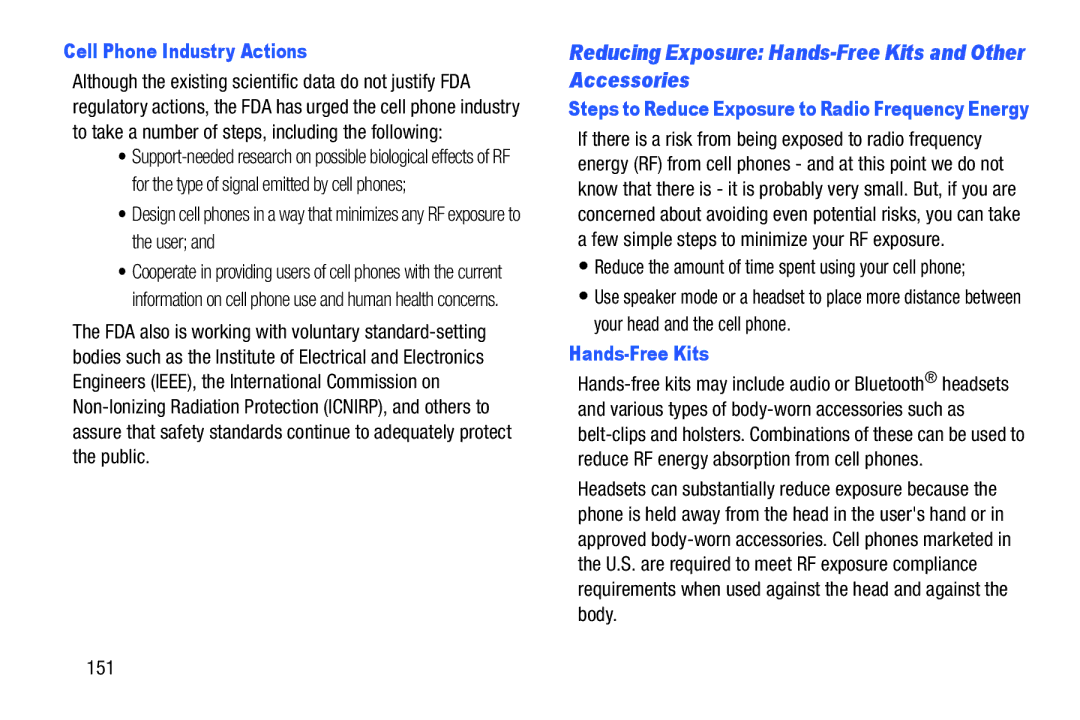Cell Phone Industry Actions
Although the existing scientific data do not justify FDA regulatory actions, the FDA has urged the cell phone industry to take a number of steps, including the following:
•
•Design cell phones in a way that minimizes any RF exposure to the user; and
•Cooperate in providing users of cell phones with the current information on cell phone use and human health concerns.
The FDA also is working with voluntary
Reducing Exposure: Hands-Free Kits and Other Accessories
Steps to Reduce Exposure to Radio Frequency Energy
If there is a risk from being exposed to radio frequency energy (RF) from cell phones - and at this point we do not know that there is - it is probably very small. But, if you are concerned about avoiding even potential risks, you can take a few simple steps to minimize your RF exposure.
•Reduce the amount of time spent using your cell phone;
•Use speaker mode or a headset to place more distance between your head and the cell phone.
Hands-Free Kits
Headsets can substantially reduce exposure because the phone is held away from the head in the user's hand or in approved
